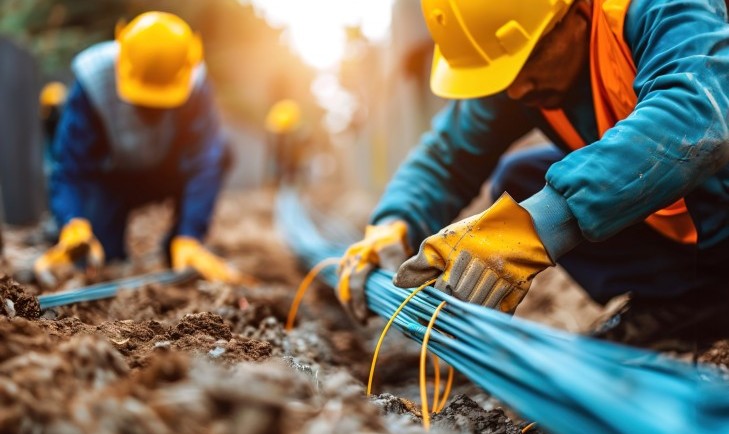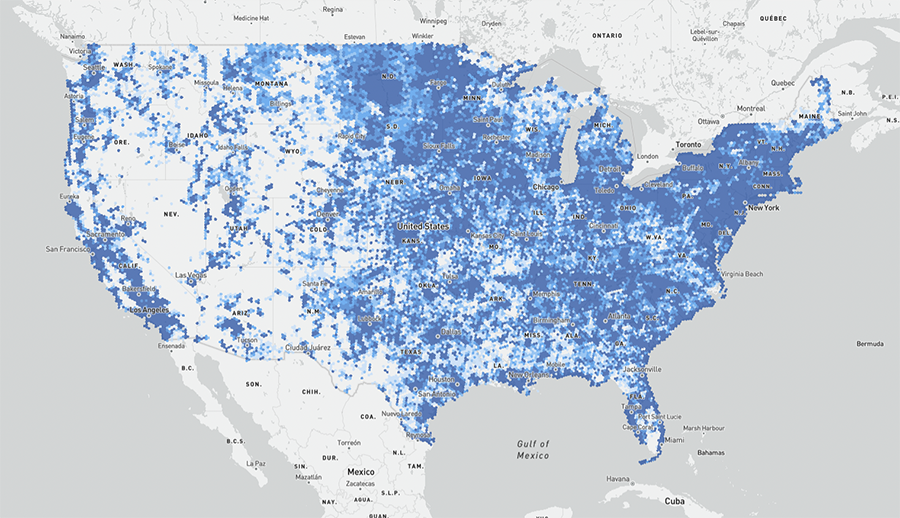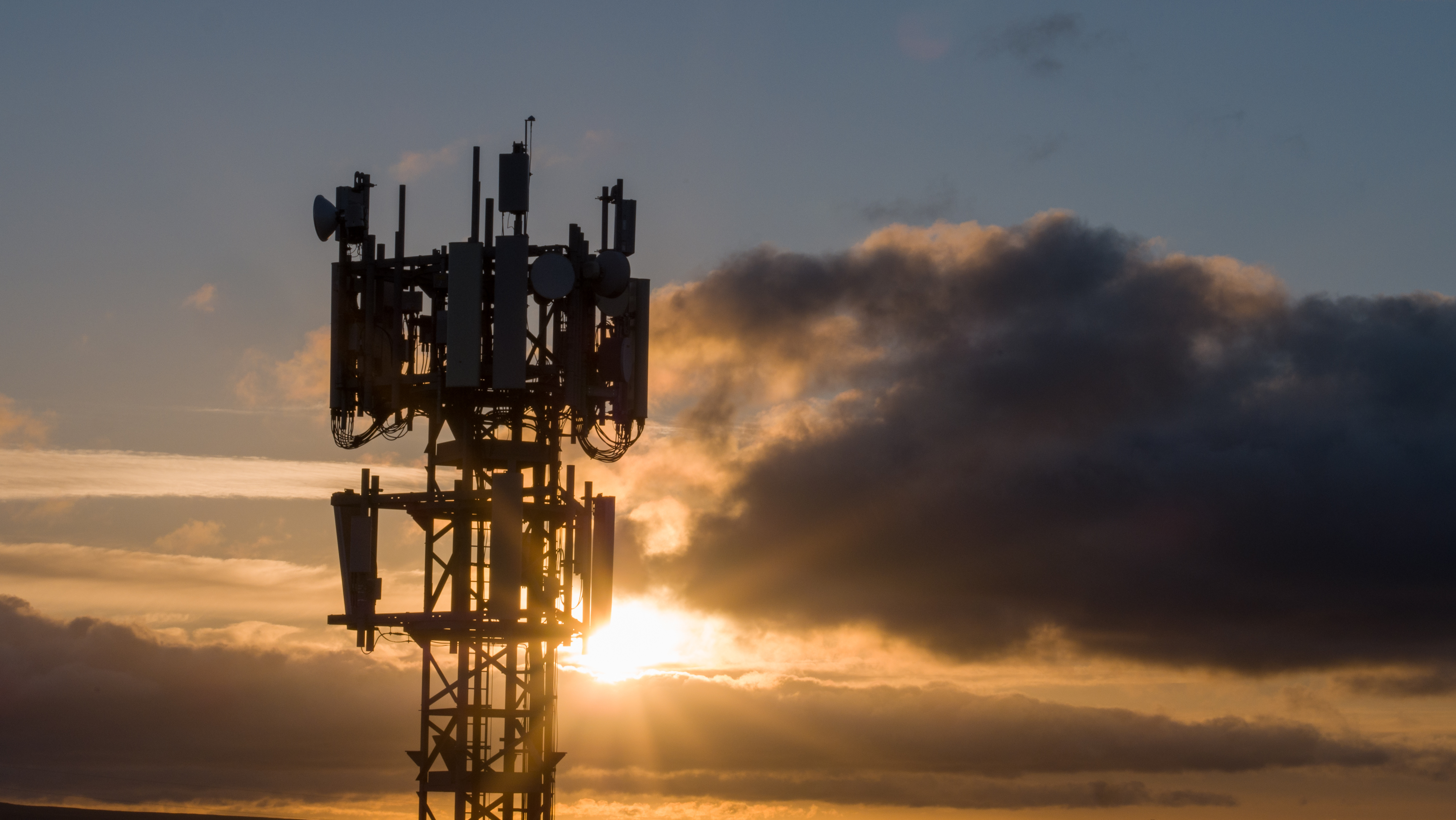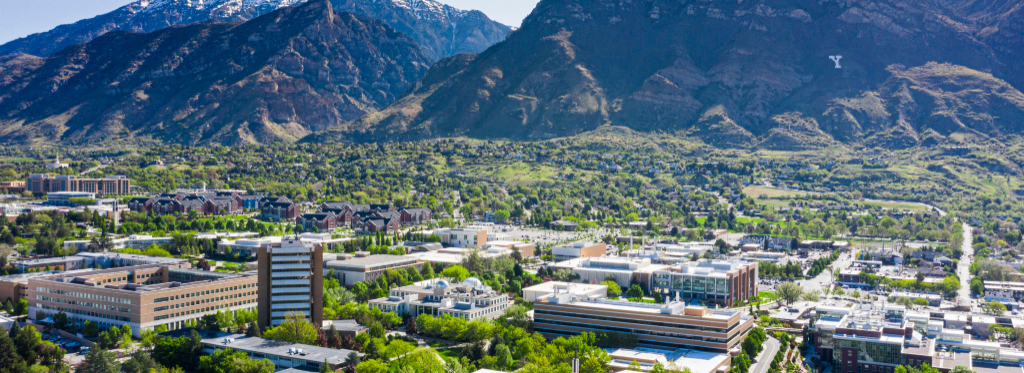08/01/24
Best of the West: Building rural broadband; carbon capture coalition; fighting drought; Wyoming mental health initiative; BYU medical school; wildfire recovery funds; honey for computers

The Western Governors' Association keeps you updated on the latest news in the West. Here are the top stories for the week starting July 29, 2024. (Photos courtesy of Adobe Stock Images, the Federal Communications Commission, the Colorado Sun, and the Church of Jesus Christ of Latter-day Saints).
Reliable broadband connectivity is a fundamental aspect of modern life. However, too many rural communities – particularly in the West – lack access to an adequate internet connection to promote and support modern technologies.
Inaccessible or unreliable internet access perpetuates and deepens the divide between rural and urban communities, especially when it comes to healthcare, employment opportunities, and education.
In terms of healthcare, communities without a strong broadband connection lack access to telehealth services, which have increased dramatically since the Covid-19 pandemic. In addition, rural communities have faced a growing rate of hospital closures and a deep shortage of physicians, with only 11% of U.S. physicians practicing in rural areas. Combined with unreliable access to internet, these challenges have deepened health inequities in rural communities.
Similar challenges are being faced in education and rural development. Broadband access is necessary to facilitate digital learning, remote work, and business capabilities. Communities without reliable internet access fall even further behind as these technologies expand, as detailed in WGA’s Policy Resolution, Broadband Connectivity.
Though areas of the rural West continue to face deep disparities in broadband connection, thanks in large part to their small populations and vast expanses of rugged terrain between communities, ongoing work and investment is helping to close the digital divide in the West.
The U.S. Department of Agriculture (USDA) has made a consistent investment in broadband connectivity in recent years, largely through its ReConnect program and other grant opportunities. Other major federal funding programs include tens of billions of dollars from the Broadband Equity, Access, and Development (BEAD) program from the National Telecommunications and Information Administration.
dollars from the Broadband Equity, Access, and Development (BEAD) program from the National Telecommunications and Information Administration.
WGA, alongside rural communities and states, has advocated for these funds to be allocated carefully and fairly, to ensure that funds reach those communities that are most in need. Just last week, New Mexico Governor Michelle Lujan Grisham announced that $675 million in federal dollars will be made available to roll out connectivity infrastructure, especially for the 16% of the state that is either underserved or unserved.
In Alaska, where 36% of people in rural areas still have no wired broadband connection, a combination of ReConnect and BEAD funding has brought more than $1.3 billion to the state to bring reliable internet to hard-to-reach areas.
Outside of federal funding opportunities, states and tribes are taking their own initiative to bring broadband connectivity to more homes.
In Nevada, the state announced $250 million for the development of the Nevada Middle Mile Network, which will connect unserved Community Anchor Institutions like schools, libraries, and community centers. Projects like these will lay the foundation for future broadband projects funded through programs like BEAD to be able to connect more individuals. Without middle mile networks, even heavily funded projects often can’t reach “last mile” customers.
projects often can’t reach “last mile” customers.
Tribal communities across the West have often faced some of the lowest rates of internet connectivity. Both federal and tribal efforts are hoping to change that through investment and training. A $3 billion investment through the Tribal Broadband Connectivity Program is bringing connectivity to tribal communities, though applications for funding are already outpacing the available federal money, further highlighting the need for tribal broadband investment.
Tribal members are also taking it upon themselves to build out their own broadband projects, by training tribal members to build and maintain broadband systems. Broadband bootcamps like the ones held near Aguanga, California, are training tribes to work with fiber to build and run their own internet systems. These bootcamps have brought together 72 tribal nations and equipped them with skills to bring back to their communities.
Read WGA’s policy resolution, advocacy letters, and media coverage of its work to learn more about Western Governors’ ongoing efforts to bring broadband connectivity to rural communities in the West.
Interstate carbon capture: the 4 Corners Carbon Coalition, comprised of local governments in Colorado, Utah, Arizona, and New Mexico, is awarding grant money to a handful of local carbon removal projects in the region.
The coalition brings together local governments in the West to pursue novel carbon capture projects that work to remove greenhouse gases from the atmosphere. In its first funding round, the 4 Corners Coalition awarded funds to projects that abated emissions from concrete manufacturing. This time, grants will go towards efforts to repurpose organic waste.
Check out Western Governors’ work on carbon removal and decarbonization during Wyoming Governor Mark Gordon’s Decarbonizing the West Chair initiative last year to learn more about the potential for carbon removal in the West.
Fighting drought: the federal government will spend $450 million on water projects in Colorado, New Mexico, Utah, and Wyoming to address the impacts of drought in the Colorado River Basin. The funds will go toward ecosystem and habitat restoration projects in areas that have been affected by drought. They will also bolster community and landscape resiliency while restoring habitats and promoting species recovery in the region.
Also this week, the USDA announced that it will invest $400 million to help farmers in the West continue commodity production while conserving water. The program will support irrigation districts and producers in using water conservation technologies and practices. It expects to conserve up to 50,000 acre-feet of water across 250,000 acres of irrigated land.
“Agricultural producers are the backbone of rural communities across the West and many of them are struggling under prolonged drought conditions,” said Agriculture Secretary Tom Vilsack. “USDA is taking an ‘all hands’ approach to help address this challenge, including these new partnerships with irrigation districts to support producers. We want to scale up the tools available to keep farmers farming, while also voluntarily conserving water and expanding markets for water-saving commodities.”
BYU Medical School: the Church of Jesus Christ of Latter-day Saints and Brigham Young University in Utah announced that it will be establishing a medical school on its Provo campus soon. The new medical school will be the fourth in the state, joining the University of Utah as the second with ties to a major university.
ties to a major university.
The LDS Church announced that the BYU Medical School will include a major focus on international health issues and the Church’s global humanitarian efforts. LDS Church membership has grown most rapidly in areas of Africa and Asia in recent years.
Wyoming mental health: Wyoming Governor Mark Gordon announced that his state is taking the next steps in its systematic approach to mental health care reform. The WY We Care initiative is a project committed to “embracing a philosophical shift from a culture deeply rooted in independence and self-reliance that fosters a narrative of ‘pull yourself up by your bootstraps,’ to a culture of resilience and acceptance that supports a new narrative of ‘it’s okay to not be okay’”, according to the program’s website.
The next phase of the program will roll out intensive suicide prevention programs in select counties across the state. Governor Gordon will host a third Mental Health Summit this October.
Wildfire recovery: New Mexico Governor Michelle Lujan Grisham signed a bill to appropriate $100 million for wildfire and flooding recovery efforts following the recent South Fork and Salt fires in the Ruidoso area. The funding will support fire and flooding recovery, help residents apply for federal aid, offer reimbursable loans for local governments, and provide recovery funding for tribes in the area.
Honey in computers: researchers at Washington State University, Vancouver, are experimenting with using honey as a component in complex computer parts. Using honey instead of material like silicon shows promise as a way to make computers more efficient while reducing electronic waste. Fifty million tons of electronic waste is generated every year, and only about 20% of it can be recycled.
Washington State researchers have also found that honey has the optimal chemical characteristics to run complicated and cutting-edge electronic memory devices.